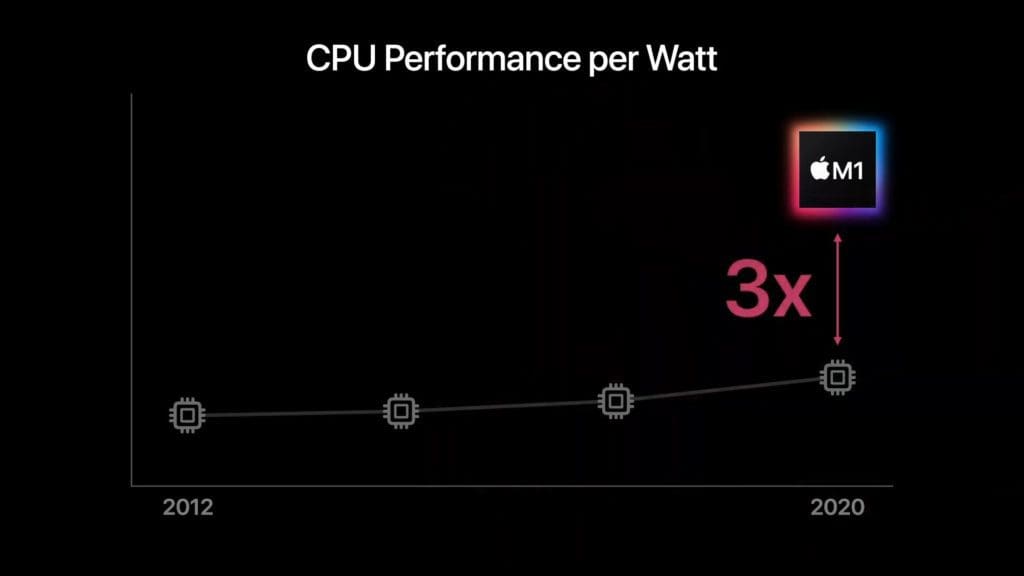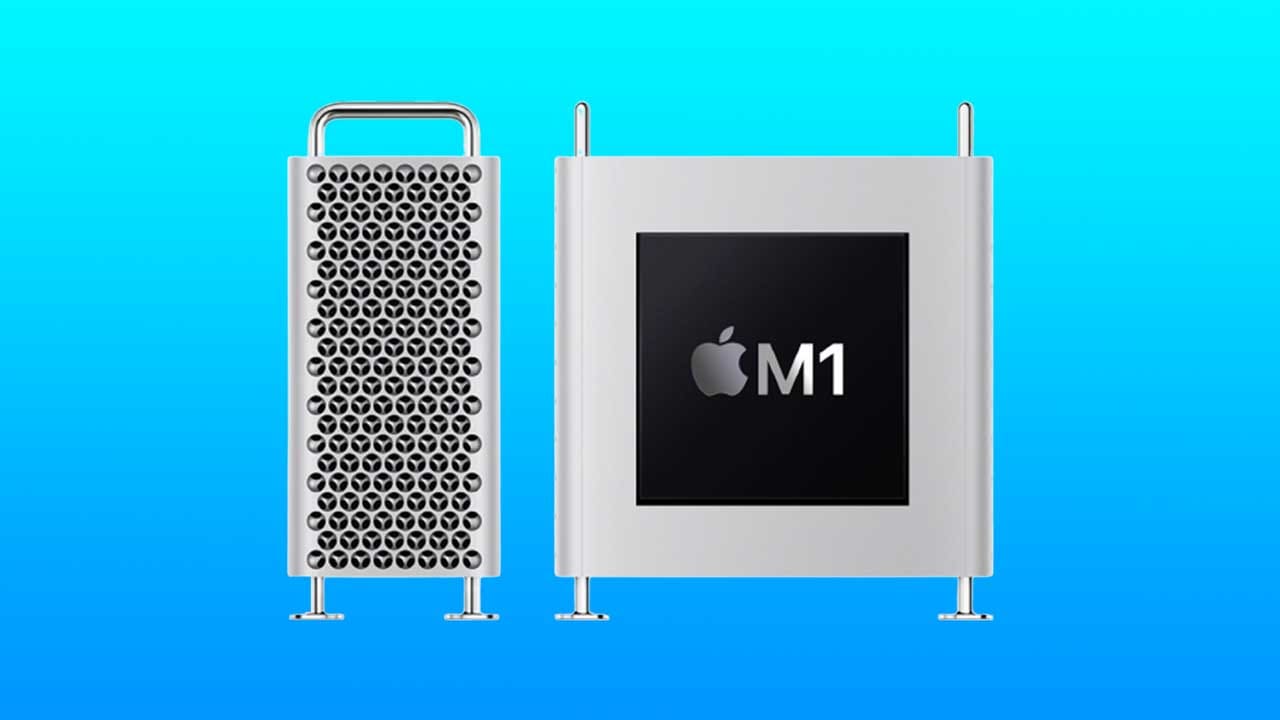Apple is furiously updating their entire Mac product line with their new silicon, but what will their brand new Mac Pro look like?
Introduction to the Mac Pro
The Mac Pro was initially designed to meet the needs of creative professionals needing more computing power than what existing Mac models could provide. This also allowed Apple to enter the high-end tier of the consumer computing market, at the time dominated by Windows machines.
From here, Apple filled the gap, using Intel server based CPUs (i.e. their Xeon architecture), and created a workstation that although expensive, had more power than anyone could ever make use of.
It featured an incredibly over-engineered case design, and remains to this date one of the most repairable computers that Apple sells (with them even offering to train IT services on how to maintain Mac Pros, but not any other computer). This overall puts the Mac Pro at the very top echelon of Workstation computing, although it has a premium price tag to match.
These beasts used to be the absolute pinnacle of computing, although as time has gone on, and with the rise of AMD Threadripper based systems becoming more commonly found in high-end workstations, Apple has been steadily losing ground lately. What better time is there than now to integrate the Mac Pro into the Apple silicon family?


Introduction to Apple Silicon
The release of the first iPhone was our very first glance at Apple silicon. Rumors soon followed that Apple would equip it’s computers with a similar upgrade, yet for years we continued to see technology from third-parties such as Intel. Fast forward to 2021, Apple is finally transitioning it’s computer lineup to Apple silicon. So, what does this transition look like for the Mac Pro?
With the release of the new architecture for Apple’s existing silicon lineup, it is broken down into different tiers. These are the S5 (found in HomePods, Apple Watches and the Apple TV) and the A14/A14 Bionic (which can be found in the latest iPhones and Apple TV 4K). An overall disapproval of Intel’s lack of development created a perfect storm which forced Apple to finally draw its hand and release the M1 SoC in early 2020.
This M1 SoC has since been featured in a plethora of new devices, including the new MacBook Air, MacBook Pro, 24 inch iMac and the Mac Mini, but it has also surprisingly featured in the newest iPad Pros.
The M1 has been proven to be a very versatile SoC, and as it is an extension of an already developed architecture, has allowed Apple to work towards a unified “Apple experience”, where applications will be able to work natively between all the different platforms which Apple offers. This tighter hold over the product stack has allowed Apple to work on further optimizations, making macOS Big Sur (and the upcoming macOS Monterrey), a more cohesive and optimized operating system.
With the success of M1, and the surprising performance that it is able to offer, there have been rumors floating that there will be higher specced SoCs offered with their higher end MacBook line (being the rumored M1X SoC). These are rumored to feature in a new 16 inch, and 14 inch MacBook Pro, with the introduction of a potential new design language.
Apple silicon takes advantage of the big.LITTLE concept that is often used with many ARM based SoCs, due to the balance that they can bring with raw performance and efficiency, This has allowed Apple to squeeze out more battery life than what otherwise would be possible from a set of cores that does both.
Although there isn’t any official announcements, there is relatively concrete information regarding the introduction of higher end MacBooks, it is entirely plausible that there will be a new Mac Pro featuring the new architecture.
Recently, Mark Gurman released in his latest newsletter post (from Bloomberg), that the SoCs inside the upcoming Mac Pro (which is supposedly more compact than the current 2019 “Cheese grater” design Mac Pro) will have up to 40 CPU cores, and 128 GPU cores.
This upcoming SoC is slated to also be based on the M1 Pro and M1 Max SoCs, and not the new architecture that Apple is expected to release with the iPhone 14, and an “M2” chip which is expected with this year’s MacBook refresh.
This SoC will allow Apple to stop waiting for Intel to integrate technologies into their CPU, such as Thunderbolt 4 and DDR5, although it will be difficult to integrate any kind of desktop GPU, as it is something that has never been successfully done before with an ARM based CPU.
The strides which have been made in integrated GPUs, as seen on the M1 Pro and M1 Max chips indicates that GPU performance will not be an issue at all, with both the M1 Pro and M1 Max trading blows with Nvidia’s mobile RTX 30 series graphics cards.
A higher TDP, significantly higher GPU cores and better cooling will potentially allow for a new “Mac Pro” SoC to go toe-to-toe with higher end desktop workstation and gaming GPUs (such as the Nvidia RTX 30 series GPUs, AMD 6000 series GPUs, Nvidia’s Quadro line and AMD’s Pro line of GPUs).
All of this indicates that Apple will almost certainly go with an in-house GPU with a similar integration to the SoC, as seen in the M1 Pro and M1 Max SoCs.
Apple is known for it’s surprises, so I wouldn’t be surprised if Apple taps into their industry connections and partnerships (such as TSMC and AMD), and potentially create the first discrete GPU for ARM (with AMD) or continue with their trajectory with a beefed up integrated GPU.


Price?
As seen with the M1 Pro and M1 Max SoCs, it is certain that the Mac Pro’s SoC will have different specifications (such as with core counts found with the previous Xeon processors). This may also vary the TDP (how much power, and therefore heat the SoC will be inputted), the amount of GPU cores found on the SoC, and therefore influence the overall performance of the machine.
There should also be the option for different GPU specs, with the possibility of having dual GPUs (as seen in the current Mac Pro lineup), although the Mac Pro may forgo using a discrete GPU altogether, and use a beefy integrated GPU, although this would probably have a tiered system, like it is seen in the M1 Pro and M1 Max SoCs.
As with all Macs that use Apple Silicon, there probably wouldn’t be a significant reduction in price, and with the starting price of the 2019 Mac Pro of $10,000 , I would predict it may sit at around $9,500 to undercut the current pricing, but that will of course differ by spec.


Performance
Apple made some very bold claims about the M1 chip when it was to be released, of which not all of it was met (at least in performance).
These SoCs are built on the same architecture as Apple’s other in-house silicon, being the S5 (as found in the Apple Watch and HomePod), the A14/A14 Bionic (As found in the iPad Air and iPhone 12 series).
As M1 is an extension of the A14 Bionic SoC (which is, in turn an extension of the S5 SoC), therefore increasing the TDP and core-count can accurately predict performance. For example, going from 4W to 6W, and from 2 performance cores to 4 performance cores (and the same 4 efficiency cores). Have a look at this article for more information.
With the introduction of the M1 Pro and M1 Max chips, it has been proven that Apple is able to extend the architecture that they have developed further, and with better cooling, higher power draw and higher core counts, has the potential to blow the current desktop market out of the water.
Is it worth waiting?
I would recommend waiting, as a release is slated to happen sometime before the end of this year, and the base model has the potential to match a maxed out 2019 Mac Pro.
Apple is certainly known for its surprises, and considering the amount you would be spending on a Mac Pro, it is worth holding off pulling the trigger for just a bit longer.
The 2019 Mac Pro will almost certainly be out-performed by the newer Mac Pro, and will probably include some new IPC improvements as well.
This will bring new life to the Mac Pro lineup, and also bring a new design with it, with there being hints one of the models will go back to a G4 cube-like design, which may also bring possibilities for those who were limited by the Mac Pro’s larger form factor.





